Explore the best places
Monuments in Évora
Centro Histórico de Évora
- heritage
Évora
7000, Évora
Discover the charms of this town-museum, classified by UNESCO, in 1986, as a world heritage site, such is his legacy and historical wealth. Let yourself be guided through historic streets and squares, where past and present mingle; revel in the natural beauty of the surrounding landscapes, delivered to the sympathy of the people eborenses, sublime-eat cuisine, gasp with the traditions and typical handicrafts.
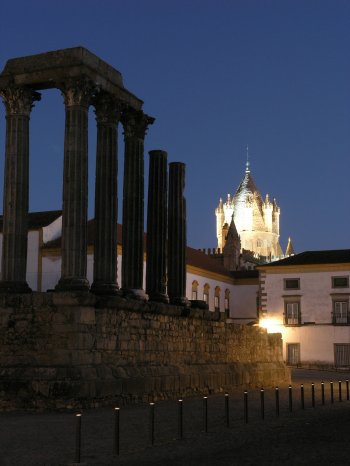
Museu Nacional Frei Manuel do Cenáculo
- heritage
Largo do Conde de Vila Flor
7000-804, Évora
Inaugurado em 1915, passou por várias vicissitudes até ser instalado em definitivo no antigo Palácio Arquiepiscopal (finais do século XVI e princípios do século XVII). Sofreu uma profunda remodelação em 1940, tendo-se valorizado as secções de Arqueologia, Arquitetura, Escultura, Epigrafia, Heráldica, Ourivesaria, Artes Decorativas e Pintura.

Paços de Évora / Palácio de Dom Manuel
- heritage
Praça 1º de Maio - Rua 24 de Julho, 1
7000-650, Évora
The Ladies gallery is what remains from this Palace which was built by the Avis dynasty during the 16th century in Gothic – renaissance style. Gil Vicente has represented seven of his Acts in this Palace dedicated to the Queens Dona Maria de Castela and Dona Catarina da Àustria.

Igreja e Antigo Convento de Nossa Senhora do Espinheiro
- heritage
CM1089-1
7005, Évora
The church underwent several improvements. From the fifteen hundreds primitive outline e from the manueline reform it only remains two apse chapels from the transept and traces from the primitive polygonal apse. On the inside it has a nave covered with a tunnel vault, the first of the seven original ranks is occupied by the high choir, lifted by an arch and Ionic pilasters, balustrade convoluted in ringlets effects. Presently it is occupied by a modern tourist property.
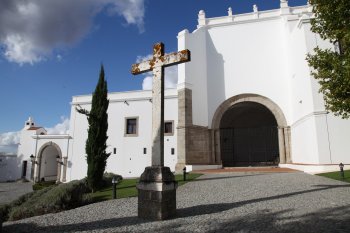
Villa Romana de Nossa Senhora do Tourega
- heritage
Nossa Senhora do Tourega
7000, Évora
This Roman villa is located on a small elevation, along the ribeira de Valverde, 12 kilometers from Evora. There was the former municipal headquarters, Liberalitas Ebora Iulia. To the East of the building there is a large tank whose main function would be to supply water storage tanks of the baths.
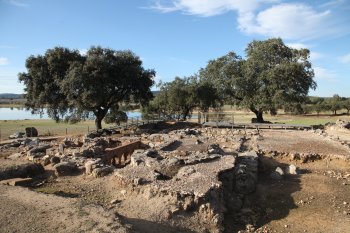
Capela dos Ossos
- heritage
Praça 1º de Maio, 4
7000-650, Évora
One of the symbols of Évora, the Capela dos Ossos lies in the interior of the Church of San Francisco and was built in the 17th century. The walls lined with bones and skulls-estimated at 5000-intend to convey the message of the transience of life.

Cromeleque dos Almendres
- heritage
Herdade dos Almendres
7000, Évora
Cromlech megalithic architecture characteristic of region of Évora. Consists of two sets of menhirs arranged in concentric circles. Are classified as Property in the public interest.

Chafariz da Praça de Giraldo
- heritage
Praça de Giraldo
7000-508, Évora
The fountain, a work of the architect Afonso Álvares, was built in the XVI century. It is made of white marble ending with a crown of bronze and eight ajutages. The tradition says these eight ajutages correspond to the eight streets that end in the square.
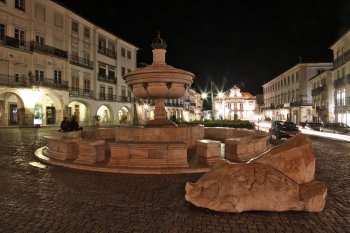
Aqueduto da Água da Prata
- heritage
Rua José Maria Correia, 4
7000, Évora
This is a renaissance work, planned by Fransico de Arruda. It is a granite aqueduct, with a tower baring the image of a saint standing out.
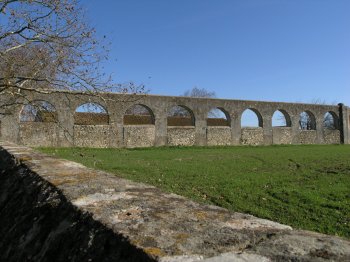
Templo Romano de Évora / Templo de Diana
- heritage
Largo Conde Vila Flor
7000, Évora
The Roman temple of Diana is the ex-libris of the city of Évora. It has 14 granite columns, with the bases and capitals made of Estremoz marble.
